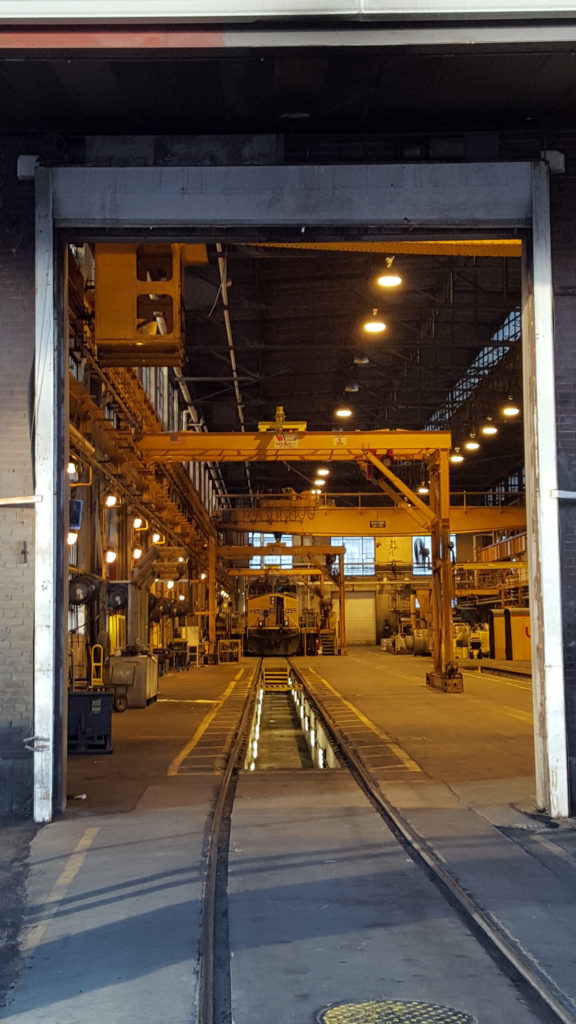CURRENT ISSUES
Burnham Yard

Interior of Machine Shop 5.
A Unique, Industrial Historic Site
Situated in an industrial corridor near the South Platte River and 1-25, the Burnham Yard property recently changed hands following more than a century of ownership by major railroads. Full plans for the site and its historic buildings are not yet developed. Historic Denver hopes to see its historic buildings preserved and adaptively reused, as they comprise a highly unusual and significant industrial historic district.
Why it Matters
“The Burnham Yards” operated as one of the city’s most significant railyards for more than 150 years — first as the primary facility for the Denver & Rio Grande Railroad (D&RG), and much later for Union Pacific, which acquired the D&RG. The use of the yards predates Colorado statehood.
Union Pacific closed Burnham in 2016, and in 2021 the Colorado Department of Transportation bought the land for the purpose of expanding I-25, with the potential for introducing passenger rail and/or expanding RTD light rail. An estimated 40 acres of the site could be sold to real estate developers for mixed-use development.
Historic buildings date from 1901 or earlier to 1943, with additions through 1965, and were built foremost as utilitarian industrial facilities to house the bustling activities of rail operations.
In the years since the yards’ closure, several of the buildings have been badly damaged by fire and/or vandalism.
Historic Denver’s Role
Our role is to research the history of the site and advocate for relevant, responsible preservation of key historic assets, and even creative use of extant site features that tell the story of the place. As the site’s potential change in use became public in 2016, Historic Denver hired Square Moon Consultants to research the history of the yards and identify potentially important structures. Historic Denver produced a full Burnhan Yard report in 2017 and provided it to Union Pacific and the City and County of Denver for use in any planning process.
Preservation of key assets is an opportunity to reconnect the yards with the adjacent neighborhoods, like La Alma Lincoln Park, that once provided its laborers — weaving a piece of the city back together. The historic buildings can help inform and complement new development and uses — including passenger rail — and evoke the important history of this place.
Background
Our research found that six surviving historic buildings and three historic site features at Burnham Yards, and their associated relationships, create a highly unusual and significant surviving industrial historic district in Denver. The six contributing railroad buildings date from at least 1901 to 1943, with additions through 1965, and were built foremost as utilitarian industrial facilities to house the bustling activities of the Denver & Rio Grande’s operations. The size and height of the 1901 Coach Shop, the 1924 Steel Car Shop, and enormous 1924 Backshop all reflect their uses to construct, repair and maintain massive railroad equipment.
All six buildings were designed and built with durable materials and occasional flourishes of bricklayers’ art. The masonry work on the buildings is of high quality, designed and executed by skilled workers. Brick masonry on these buildings reveals common practices that were once common knowledge for craftsman but are exceptional today.
Get Involved
A Historic Denver membership not only provides financial support so that our staff can work every day on behalf of historic places; it also demonstrates that our community cares. You can take action by becoming a member today.
Updated May 2022
